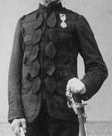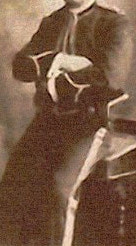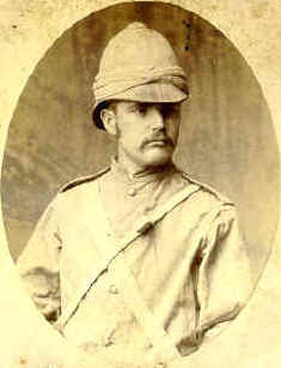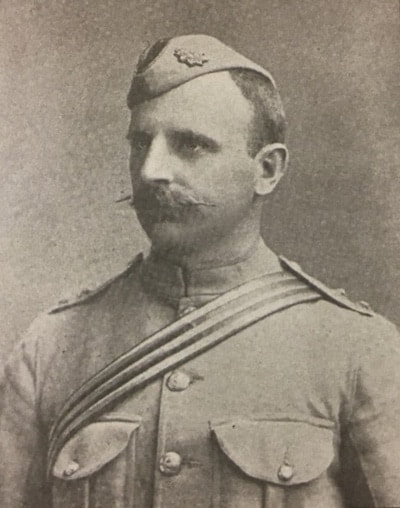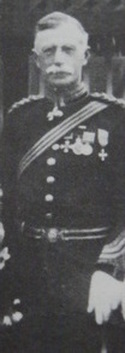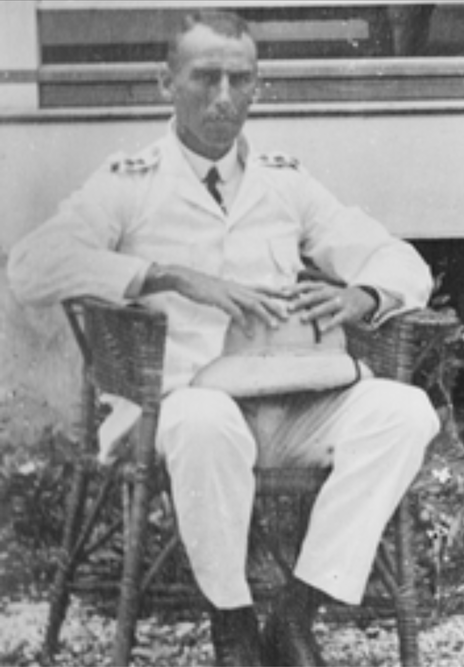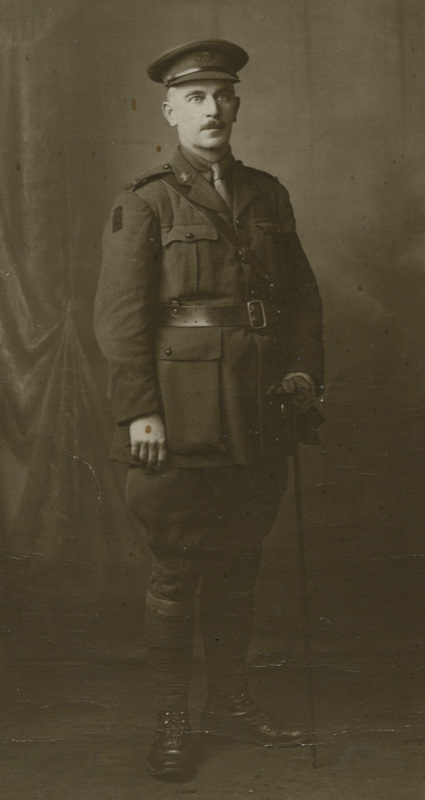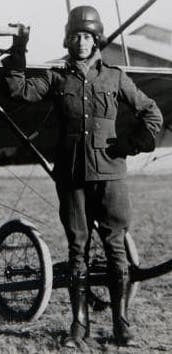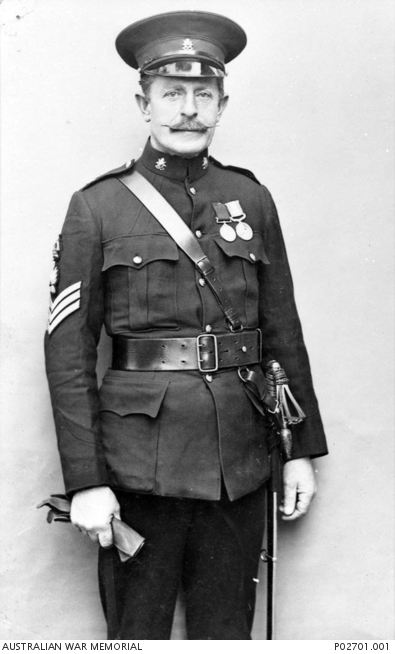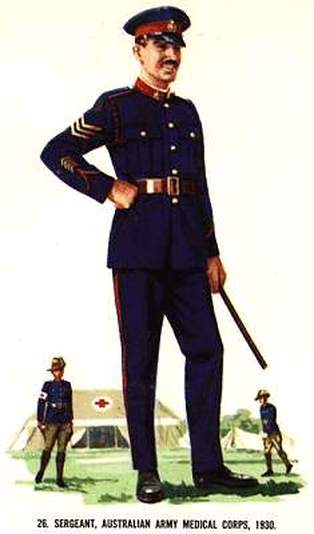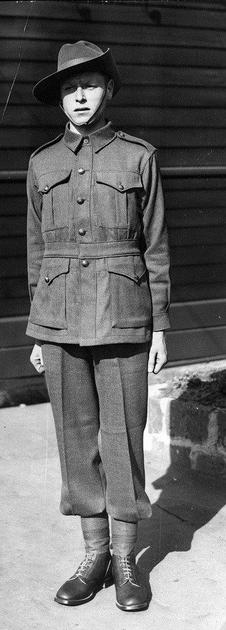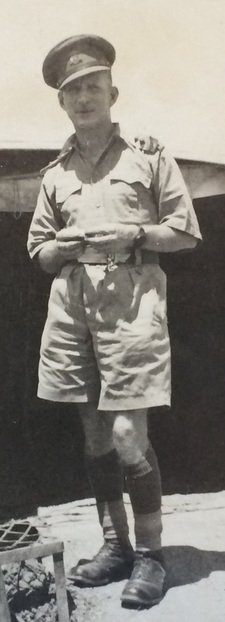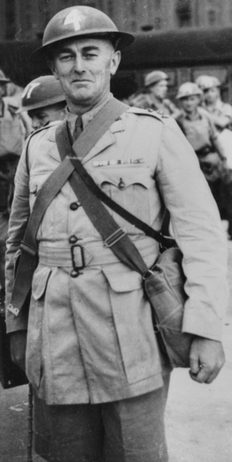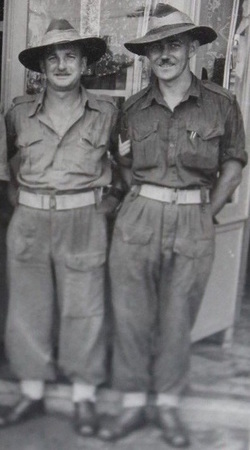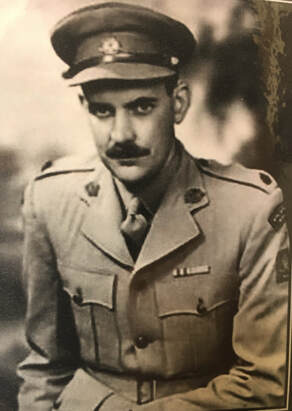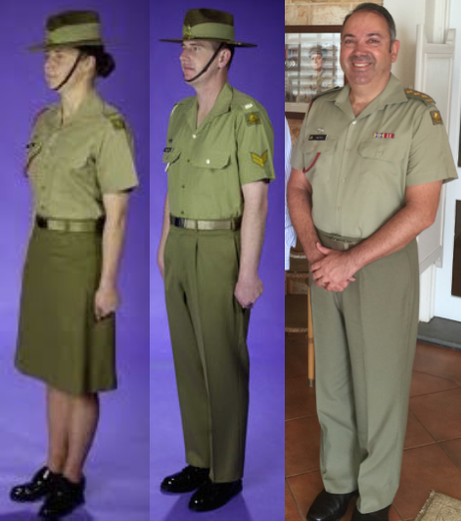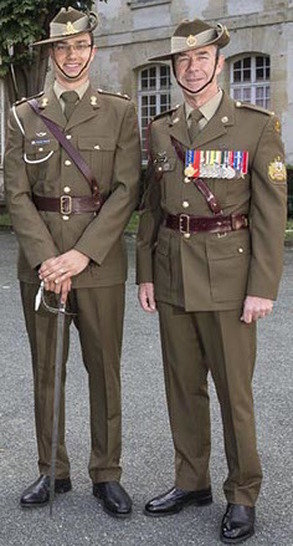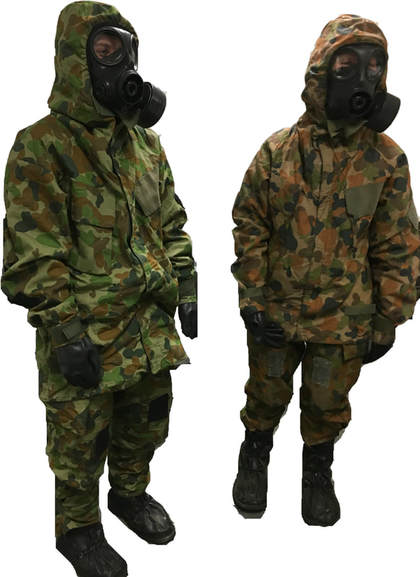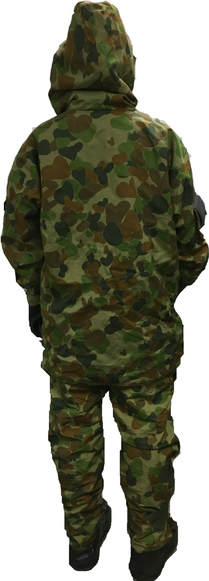australian army medical uniforms
Australian Army Medical Corps Uniform Development
british garrison in australia
With the First Fleet in 1788, all 5 Royal Marine medical officers, headed by Principal Surgeon John White, wore the dark blue tunic of a Royal Marine Officer (Navy). When replaced by the Second Fleet in 1790, Regimental Surgeon John Harris of the New South Wales Corps (Army) arrived. During the early 1800's various British Regiments were stationed in the Colonies, with commissioned British Medical Officers wearing the uniform of their serving regiment while in Australia - although he held no military rank and was under the command of the Colonel of his Regiment. British Garrison troops were served by these regimental surgeons, supplemented by colonial service surgeons, until 1870. Army hospital staff were also provided by regimental hospital N.C.O.'s and male orderlies.
Uniforms worn by British Army medical personnel stationed in Australia followed Dress Regulations of the time (see 'British Dress Regulations' below), while a variety of uniforms were worn by the various local colonial Volunteer Associations supplementing the British garrisons until 1870 when all Imperial Troops were withdrawn from Australia.
From 1870 until Federation in 1901, the defence fell to the colonial forces of each state whose personnel were divided into three catagories: small enlisted regular forces (on full pay); militias (on part pay); and/ or part-time volunteers. Their uniform was influenced by the British Army and into which of the three categories the person enlisted in.
British Dress Regulations: Regimental surgeons existed since 1660, and then from 1804 the Army Medical Department was established, thus creating two medical branches in the British Army, a Regimental and a Staff branch, until 1873 when officers of these two branches were amalgamated. A surgeon could either serve as a regimental surgeon in a particular regiment, or, as a medical officer in a staff role (Medical Staff Officer). There were also commissioned officers of the Army Hospital Corps who were not medical officers but were generally appointed from quartermasters or infantry officers promoted form the ranks - these were known as lieutenants or captains of orderlies. There were three types of uniforms (Dress) worn by officers; Undress for day to day work duties; Full Dress for parades or special occasions; and Mess Dress for official or regimental dining in nights:
Uniforms worn by British Army medical personnel stationed in Australia followed Dress Regulations of the time (see 'British Dress Regulations' below), while a variety of uniforms were worn by the various local colonial Volunteer Associations supplementing the British garrisons until 1870 when all Imperial Troops were withdrawn from Australia.
From 1870 until Federation in 1901, the defence fell to the colonial forces of each state whose personnel were divided into three catagories: small enlisted regular forces (on full pay); militias (on part pay); and/ or part-time volunteers. Their uniform was influenced by the British Army and into which of the three categories the person enlisted in.
British Dress Regulations: Regimental surgeons existed since 1660, and then from 1804 the Army Medical Department was established, thus creating two medical branches in the British Army, a Regimental and a Staff branch, until 1873 when officers of these two branches were amalgamated. A surgeon could either serve as a regimental surgeon in a particular regiment, or, as a medical officer in a staff role (Medical Staff Officer). There were also commissioned officers of the Army Hospital Corps who were not medical officers but were generally appointed from quartermasters or infantry officers promoted form the ranks - these were known as lieutenants or captains of orderlies. There were three types of uniforms (Dress) worn by officers; Undress for day to day work duties; Full Dress for parades or special occasions; and Mess Dress for official or regimental dining in nights:
- Undress uniform of a regimental surgeon from 1660 through to 1873 was largely a matter for the discretion of the commanding officer but usually followed the uniform of the regiment. In 1797 Full Dress for surgeons was a scarlet coat with plain red collar and cuffs and distinctive buttons of their regiment but without epaulettes (in 1813 regimental surgeons and assistant surgeons were ordered to wear an epaulette on the right shoulder but this was abolished in 1817 and then re-introduced in 1830). A white waist coat and breeches were also worn, together with a plain black cocked hat with a regimental button but no loop or plume completed this uniform. With the purchase of a Dress and Undress uniform, military cloak, boots, gloves, and stock, together with camp equipment, portable bed, bedding, bullock trunks, water proof rug, canteen, warm clothing, and a Dean & Adams revolver, at 7s 6d a day pay took almost a year to pay off the debt.
- Medical Staff Officers were not regarded as military officers and dressed very much as they pleased until 1797 when orders were issued to regulate their mode of dress. These stated that members of the Army Medical Staff would be attired like regimental surgeons except that their buttons being engraved beneath the King's Crown with the letters H.S. (Hospital Staff). In 1804 further Regulations defined the dress to be worn by the senior members of the Staff, such as Deputy Inspector General of Hospitals, consisting of a scarlet coat with black velvet collar and cuffs with gilt buttons bearing the words "Hospital Staff" around a crown in the centre; two epaulettes embroidered with gold on black velvet, together with one gold button on the collar and each cuff. A cocked hat complemented the uniform and was decorated with a black loop & button and had a black feather plume. In 1822 the traditional scarlet coat was changed to blue but in 1830 changed back to scarlet again, then back to blue in 1834 only to be changed yet again back to scarlet in 1846. Junior officers such as staff surgeons, apothecaries and hospital mates wore an epaulette on the right shoulder only. Purveyors were distinguished by silver epaulettes.
- The Dress Regulations of 1855 and 1857 brought further alterations following the inadequacies of the then restrictive and tight fitting coatee uniform worn during the Crimean war. The new Dress Regulations provided a more comfortable uniform for the soldier and at reduced costs to the British Government - even more so, maximum use was made of items of undress clothing. The undress shell jacket (infantry) or stable jacket (cavalry) was a short waist length jacket and forage cap that was traditionally worn in order to save damage or staining to dress coats while on fatigue duties. This became the principal dress in Britain and in the colonies for both enlisted and officer which was worn at mess and especially in tropical climates instead of the dress coatee (The origins of the 1855 uniform changes by H. Strachan & J. Alexander).
- The adoption of the Full Dress tunic after 1857 was still scarlet, but single breasted with a black velvet collar, cuffs, and sleeve flaps for medical personnel.
- For active duty and less formal occasions (Undress) officers usually preferred to wear the dark blue double breasted frock coat and blue trousers with a scarlet stripe at the outer seam, forage cap and sword with black belt. The head dress was a dark blue peaked forage cap with a black silk oak leaf band and to the front the letters 'V.R.' surmounted by a Queens (Victorian) Crown, all embroidered in gold. This was particularly worn by auxiliary forces, Volunteer forces, and the Militia and was worn on parades and in the field.
- For mess dress, a scarlet shell jacket with black velvet collar and cuffs was authorised.
- Shoulder Belt Plates: Regimental surgeons generally wore the dress of the corps to which they were attached to but did not wear crimson sashes or the pre-1855 shoulder belt. Their swords were usually worn on a black leather waist belt. After 1855, Army Medical Department officers were required to wear a black leather shoulder belt, having a gilt Royal Cypher surmounted by a crown (see badge in Medical Memorabilia), with a waist belt, and was normally worn as part of the undress uniform.
- Forage Cap: Dress Regulations of 1857 provided for the following head dress for officers of the Army Medical Department while wearing undress uniform; 'A dark blue cloth forage cap with a black leather peak and chin strap, and the band to be in black silk in oak leaf pattern'. The insignia to the front of the band was a Royal Cypher surmounted by a Victorian Crown embroidered in gold wire.
- Buttons: Medical officers attached to military hospitals wore a gilt button with the title 'Hospital Staff' inscribed on a circle mounted on a eight pointed star and surmounted by a crown. Senior N.C.O.'s wore a brass tunic button with 'Hospital Staff', and other ranks wore smaller buttons of General Service patter. Before 1837 the circle took the form of a garter. Officers of the Army Medical Staff wore buttons of similar design but inscribed 'Army Medical Staff'. Between 1830 and 1837 the buttons were flat gilt with the cypher 'W.R.' intertwined with 'IV' within the Garter.
- Shako plates: Medical Staff Officers and sergeants wore a 'Universal' type plate (1855-1869 pattern) with the central device consisting of a St. George Cross (not to be mistaken for a Geneva Cross).
- The uniform issued to the rank and file of the Medical Staff Corps in 1855 was grey with no badges of rank. In 1857 the Army Hospital Corps was dressed in dark blue with grey facings (changed to scarlet facings in 1861), with two grades of sergeant as N.C.O ranks (no corporal rank). During the 1860s the Geneva Cross was introduced in the form of a circular badge worn on the right upper sleeve by all N.C.Os and Other Ranks. The privates were divided into three grades according to occupational skill. The head dress worn by junior sergeants and privates conformed to the then current infantry pattern dark blue cloth round 'pillbox' cap with a black band having a Royal Cypher without the Crown made of brass (and slightly smaller in size than the Sergeant Majors). Sergeant majors were permitted to wear a forage cap similar to that worn by surgeons except that the badge was the Royal Cypher without the Crown and was made of brass (rather than embroidered).
Uniforms of The colonial period
The Australian colonies adopted many of the uniforms and colours of the British Army (refer to British Dress Regulations of 1857 above) and in some instances drew inspiration from other Armies. As there was no specific medical corps at the time, Doctors who served directly with a local unit (local colonial Volunteer Associations) wore that particular unit's style of uniform usually with black facings that signified medical. Some of these uniform styles are illustrated below and show the range of different types worn during the Victorian period by colonial Australian Volunteer Forces. From the later half of the 19th century, colonial medical personnel followed that of the British Army Medical Service in specific types of uniforms worn by medical personnel. These types of uniforms include the following (hover over each picture for each uniform type):
Note: for further reference on uniform types please see the uniform gallery tag listed above.
At the turn of the 20th century these types of uniforms gave way to khaki field uniforms that gave the soldier greater camouflage capabilities when confronting the enemy.
There were different types of uniforms (or 'dress') for different occasions: A special 'full dress' uniform for parades and other ceremonial occasions which was colourful & elaborate; the 'undress' uniform for ordinary day to day duty; Mess Dress for dining; and khaki drab 'field' uniforms that were increasingly adopted towards the end of the 19th century. These forms of Dress were promulgated in Standing Orders for Dress and Clothing: for 1912,
Members of Militia (volunteer) units normally wore brown leather belts, straps and pouches. Militia pattern uniforms for the Medical Department of Victoria followed that of the Army Medical Department. Helmet plates and badges (Medical) were usually made of a silver metal for Volunteers, and brass (gilded for Officers) for Militia and Permanent members.
During the colonial period rank was usually displayed on the right sleeve for NCOs along with a Geneva Cross Trade badge. For officers rank was displayed on the collars & cuffs; one star at both ends of the collar signified a Ensign/Cornet, a Victorian crown for a Lieutenant, and a Victorian crown & star for a Major, with Lace on the collar and cuffs - the more elaborate lace the higher the rank.
Upon Federation, ranks continued to be displayed on the right sleeve for NCOs, and for officers there was a combination of chevron lace, stars and crowns that were worn on both cuffs (the same rank system as the British Army).
Early in WW1 to WW2 rank was displayed on both epaulettes for Officers, and for NCOs rank remained of the right upper sleeve.
UNIFORM GALLERY
Move cursor over the image for description.UOTW illustrations.
At the turn of the 20th century these types of uniforms gave way to khaki field uniforms that gave the soldier greater camouflage capabilities when confronting the enemy.
There were different types of uniforms (or 'dress') for different occasions: A special 'full dress' uniform for parades and other ceremonial occasions which was colourful & elaborate; the 'undress' uniform for ordinary day to day duty; Mess Dress for dining; and khaki drab 'field' uniforms that were increasingly adopted towards the end of the 19th century. These forms of Dress were promulgated in Standing Orders for Dress and Clothing: for 1912,
Members of Militia (volunteer) units normally wore brown leather belts, straps and pouches. Militia pattern uniforms for the Medical Department of Victoria followed that of the Army Medical Department. Helmet plates and badges (Medical) were usually made of a silver metal for Volunteers, and brass (gilded for Officers) for Militia and Permanent members.
During the colonial period rank was usually displayed on the right sleeve for NCOs along with a Geneva Cross Trade badge. For officers rank was displayed on the collars & cuffs; one star at both ends of the collar signified a Ensign/Cornet, a Victorian crown for a Lieutenant, and a Victorian crown & star for a Major, with Lace on the collar and cuffs - the more elaborate lace the higher the rank.
Upon Federation, ranks continued to be displayed on the right sleeve for NCOs, and for officers there was a combination of chevron lace, stars and crowns that were worn on both cuffs (the same rank system as the British Army).
Early in WW1 to WW2 rank was displayed on both epaulettes for Officers, and for NCOs rank remained of the right upper sleeve.
UNIFORM GALLERY
Move cursor over the image for description.UOTW illustrations.
|
1860 - 1900 Army Medical Corps
These pictures supplement the Uniform Gallery and illustrate other types of uniforms that were worn by medical officers prior to Federation. Early photos show Medical Officers wearing the uniform of their local Unit and hat (e.g. Kepi or busby) or the medical fore aft hat. In the late 1800s, Medical Officers and personnel wore the same style of British medical uniform. Surgeon Officers Edwards and Roth are examples - wearing a dark blue four pocket light wool tunic with a mandarin standing collar, epaulettes, and gold N.S.W buttons. Long dark blue light wool trousers and black leather ankle boots completed the uniform, with a dark blue wool Forage cap with Medical Corps gold lace centre band and gold wire braid to the front visor. Surgeon-Colonel Williams wears the dark blue wool medical pattern frock coat (see an example in the 'Pre-Federation' tab) and a dark blue forage cap with a gold lace centre band of oak leaves and gold wire braid to the front visor. Captain Griffiths wears a forage cap with a Victorian officers badge and the Queensland Senior NCO Medic wears a forage cap with a Queensland helmet plate. |
|
1885 Soudan War
|
The colourful uniforms of the colonies were not very practical for campaign service overseas. A cotton cloth rather than wool serge was required and needed to blend into the surroundings for camouflage purposes.
The uniforms worn by the NSW Medical contingent consisted of a heavy cotton light khaki tunic with epaulettes, standing collar and buttons down the centre opening. No pockets are evident in the photos. Long trousers of the same cloth was worn. A white blanco belt, pouches, cross belt and a water bottle was worn, together with a pith helmet which was probably stained with tea to make the white cloth a brown shade, with a puggaree. Rank stripes were worn on the right arm. |
|
1901 NSW Medical Staff Corps
Dr James Adam Dick, Lieutenant (see also the 8th illustration in the Uniform Gallery above of the same uniform). As a mounted Corps, this is the mounted version of the khaki jacket. The jacket has NSW silver buttons to the front, top pockets and epaulettes) The embellishments are chocolate brown lace with infantry-style rank on the cuffs. A Sam Browne belt is worn here. A chocolate brown aiguillette hang from the right shoulder with twisted cord epaulettes to both shoulders having a single rank pip. A white pith helmet with a chocolate brown puggaree with a red fold, and white metal base, ball and chin chain was worn with this uniform. The colony badge in white metal was worn above the puggaree. |
|
ARMY UNIFORM - BOER WAR.
1899 NSWAMC and 1902 AAMC (Commonwealth) Khaki jacket. Stand up collar. Epaulettes. 2 pleated breast pockets. Can have two large lower patch pockets. Plain cuffs - no V. 1899. Boer War
Victorian Medical Officer. A pre-federation uniform pattern worn by a Medical Officer prior to embarkation. Khaki light wool tunic with standing collar and two pleated breast pockets. Matching wool long trousers and black leather ankle boots. Plain cuffs, epaulettes with rank, and Victorian buttons. A forage cap with a chocolate brown central fold with a Victorian badge attached. A medical pattern cross belt & pouch is worn Side arm is a medical pattern sword. |
uniform patterns from federation
The first dress regulations for the Military Forces of the Commonwealth were the 'Officer's Dress Regulations (Provisional)' of 1903. In 1906 the 'Standing Orders for Dress and Clothing' was published, providing a near complete description of the articles of clothing then in use by officers and other ranks.
|
1903 Pattern EM Service Dress
Khaki jacket. Stand / fall collar. Choc brown collar tabs with red lines. Epaulettes with chic brown piping and two central red lines. 2 pleated breast pockets and 2 internal hip pockets. AUST ARMY MEDICAL CORPS worsted sleeve patches. Choc brown piped V to cuffs. 2 buttons on each cuff. 1903 Pattern NCO
Full Dress Slouch hat with puggaree having a central fold of chocolate brown. Australian Rising Sun affixed to the turn up. Khaki jacket. Stand / fall collar. Choc brown collar tabs with central red line. Choc brown shoulder cords & aiguillette. AUST ARMY MEDICAL CORPS worsted sleeve patches. 2 pleated breast pockets. Chocolate brown piped V to cuffs. 2 buttons on each cuff. Service Dress As above but with epaulettes piped around the edge with chocolate brown and a red central line. 1903 Pattern Officer Full Dress
Slouch Hat with puggaree having a central chocolate brown central fold. An Australian Rising Sun hat badge on a chocolate brown rosette affixed to the turn up. A gilt brass plume holder with black Emu feathers adorn the hat. Khaki jacket with a stand / fall collar. Choc brown collar tabs with red lines. In this photo this officer is the SMO of the WA Mixed Brigade so has Australian Rising Sun collar badge affixed to the centre of the collar tabs instead of the 1903-1930 Medical badge. Gold shoulder cords with a chocolate brown fleck, with a gold & Chocolate brown fleck aiguillette. Either 2 pleated breast pockets only, or with two lower patch pockets (see the two variations in the Photo Gallery section 'Post-Federation 1901-1913'). Officers rank to be worn on the cuff for Service/Full Dress and on the epaulettes for coats and Frock coats. Trousers of khaki wool cloth having 2 chocolate brown stripes down both legs on the outside seam. Brown leather ankle boots. 1903 Officers Pattern Service Dress
Khaki peak cap with chocolate brown central band, black patent leather chin strap and visor, having the 1903-1930 pattern AAMC badge affixed to the front. Khaki wool jacket with a stand / fall collar and epaulettes having chocolate brown piping and central a red line. Choc brown collar tabs with red lines with the 1903-1930 pattern AAMC badge affixed to the centre. Either 2 pleated breast pockets only, or with two lower patch pockets (see the two variations in the Photo Gallery section 'Post-Federation 1901-1913'). Rank displayed on both cuffs. Khaki wool trousers and boots. 1906 Pattern EM summer dress
Slouch hat. Khaki jacket. Stand / fall collar with Medical Collar badges fixed with the centre of the badge 2 inches from the opening of the collar of the garment. 2 pleated breast pockets. Plain cuffs. Khaki long trousers. Brown leather leggings. Brown leather boots. 1906 Pattern Officer Service Dress
and Full Dress Khaki visor cap with central chocolate brown colour fine wool band, having a 1906 pattern Australian Army Medical Corps hat badge affixed to the front band. Brown leather chin strap and black patterned leather visor. Khaki jacket with a stand / fall collar with Medical Collar badges fixed to the gorget patches with the badge worn in the centre of the patch. Service Dress: épaulettes with chocolate brown pipping with a central red strip. Full Dress: Gold shoulder plaited shoulder cords and & aiguillette, all with a silk chocolate thread worked inBadges of rank are worn on shoulder cords and epaulettes and will be in silver embroidery on gold shoulder cords or gilt metal on the cloth epaulettes. 2 buttons on each cuff. Embroidered rank was on the Mess Dress epaulettes. 1912 Pattern Other Ranks uniform
Slouch hat with chocolate brown wool puggaree. Khaki jacket. Stand / fall collar with Medical Collar badges fixed to the gorget patches with the badge worn in the centre of the patch. 2 pleated breast pockets. 2 lower expanding pockets. V cuffs but not piped. Chocolate brown collar tabs with red worsted lines. 1906 pattern Australian Army Medical Corps collar badge fixed to each collar tab. Epaulettes piped in chocolate brown, having two thin red stripes. NCO rank worn on upper right sleeve with the Geneva Cross Trade Badge above. 1912 Pattern Officer Service Dress
In accordance with sealed pattern of Commonwealth pattern khaki cloth: Officers (step collar) - Single-breasted, cut as a lounge coat to the waist with back seam, very loose at the chest and shoulders, but fitted at the waist; waist band 2 1/4 inches wide, military skirt to bottom edge; length of skirt, 13 inches for a man 5 feet 9 inches, step collar, depth of opening about 3 inches, two cross-patch breast pockets above, 6½ inches wide and 7½ inches deep from the top of the flap, box plait in centre 2 1/4 inches wide, three-pointed flap 6½ inches wide and 2 1/4 inches deep, two expanding pockets below the waist plaits at the sides, 9¼ inches wide at the top and 10½ inches at the bottom, 8 inches deep to the top of the pocket and fastened at the top with a line 26 button, flap with button-hole to cover pockets 5½ inches deep, 10~ inches wide, sewn into the bottom edge of the waistband. The top of the plaits of the pockets should be sewn down at the comers in such a manner that on service the pocket can be expanded at the top also; outside ticket pocket in the top of the waistband on the right side; inside watch pocket with leather tab above for chain or strap. To be lined or not, or as required, with lining of similar colour to the jacket. Pointed cuffs. Shoulder straps of same material as the jacket. 1912 Full Dress Uniform The uniform as above, with the addition of Chocolate silk shoulder plaited cords and aiguillette, fastened by a loop and screw button to the shoulder of the jacket. 1912 Pattern Officer Uniform
Full Dress Ceremonial Dress Dark Blue melton wool cloth tunic and long trousers. Black velvet collar with gold braid appropriate to rank. Red piping down front seam and lower edge. Gold braid appropriate to the wearers rank on both lower sleeves with black velvet Facings. Gold cord epaulettes with wire bullion rank. 8 gold 'Australia' buttons or crossed sword/baton for General rank. Embroidered belt and cross strap. Aiguillette worn on right shoulder for official duties. 1914. White Summer Uniform.
Worn by the AN&MEF Khaki slouch hat or peak cap with white cotton removable top. There were three patterns of the Enlisted Man's white cotton drill tunic and long trousers with white shoes: (1) Stand up collar with an Australian Rising Sun badge attached either side, two pleated breast pockets with scolloped flaps, and two lower patch pockets with buttons. Epaulettes to shoulders. (2) Stand and fall collar with an Australian Rising Sun badge attached either side, two pleated breast pockets with scolloped flaps, and two lower pleated pockets. Epaulettes to shoulders with AUSTRALIA titles in metal. (3) Stand up collar with an Australian Rising Sun badge attached either side, two pleated breast pockets with scolloped flaps, and two lower patch pockets without buttons. Epaulettes to shoulders.Australian metal buttons (5) to the front. Rank and Geneva cross worn to right upper arm. 1914. White Summer Officer's Uniform.
Worn by the AN&MEF Officers peak cap or solar topee. 1912 pattern tunic with a step collar in white cotton drill, two pleated patch pockets with scolloped flaps, two lower patch pockets, pointed cuffs, and epaulettes displaying rank in metal. White shirt and black tie. White cotton long trousers and white shoes or black ankle boots. Note: photographic evidence also shows Officers wearing the standing collar tunic aswell (see photo gallery). 1914. Khaki Uniform worn by the AN&MEF.
Khaki slouch hat. A cotton drill uniform with stand/fall collar, 4 pleated pockets with scolloped flaps, V cuffs, and epaulettes. Rising Sun badges were fixed to the collar. Long trousers and ankle boots. 1914 and 1917 Pattern EM Service Dress.
Khaki wool peak cap with a thin brown leather chin strap and Australian Rising Sun cap badge, or Slouch hat and large Rising Sun badge affixed to the turn up. Stand/fall collar Khaki jacket (variations in khaki/drab colour): twill weave or in a flannel cloth: in 8, 10, 12, 16, or 18 oz weight. Six pleats (3 on each side) in the back of the jacket, in addition to a centre seam. 1914 pattern was unlined with a false 2 inch cloth belt and central brass buckle - having no internal pocket reinforcing or internal shell-dressing pocket. 1917 pattern (made under contract in England) had a sewn in false belt but no buckle, internal pocket reinforced seams & an internal shell-dressing pocket. Epaulettes with 'AMC' and 'AUSTRALIA' metal titles. 2 pleated breast pockets and 2 bellows hip pockets. 13 buttons - 5 front, 4 pockets, 2 shoulder, 2 cuffs. Brown or green dish style Bakelite buttons, or buttons of platted leather. Officers and some NCOs also used Australian Map metal buttons. Rank and trade badge (Geneva cross) stitched to the right upper sleeve only. Unit colour patch upper arms. Bedford cord 3/4 length breeches: two types-Mounted Service with extra reinforcing in the crotch/inner thighs and Dismounted Service were worn. Also worn were serge cloth breeches, and British SD trousers. Wool leg wrappings, or leather leggings, or in 1918 some AIF wore American canvas leggings. Brown leather boots with hob nails (no toe cap). 1915 - 1918 Full equipment - Medical Corps
Web waist belt Medical haver sack Personal water bottle Medical pouch Blanket roll Peaked cap WW1 Officer Service Dress
At the commencement of WW1 Australian Army Officers wore the 1912 Pattern Officers Service Dress with the following additions: Khaki wool peak cap with the Australian Rising Sun cap badge affixed to the front, and a narrow brown leather chin strap held with two leather "football" buttons. Fine khaki wool open collar tunic with epaulettes and inverted 'V' cuffs. Collar affixed with two small Australian Rising Sun badges, and the epaulettes displaying the wearer's rank and AUSTRALIA titles. 2 pleated chest pockets with scalloped flaps and 2 large patch hip pockets with straight flaps. All buttons are leather "football" buttons but later in the war were blackened metal Australian Military Forces buttons. Colour patch sewn to both upper sleeves. Brown leather Sam Browne belt. Khaki wool shirt and tie. Bedford cord breeches. Leather or khaki cloth leggings or high brown leather lace up boots. 1914 Officer Service Dress Summer
This was the 1912 Pattern Officers Service Dress but of a light weight Khaki drill fabric. Peak cap similar in style to the Other Ranks peak cap, having a brown leather edging to the peak. The light khaki cotton drill tunic is in the same cut as the winter Service Dress uniform with V cuffs, buttons and rank to epaulettes. Cotton corded breaches. Brown leather gaiters and brown leather ankle boots with spurs. Sam Brown belt. 1915. Australian Flying Corps.
Pilot Medical Officer. The Australian Army formed the Australian Flying Corps and trained at Point Cook. The uniform consisted of the 1914 Pattern Officers Service Dress Uniform with a winged propellor device on the collars. This may have been official or a personal but sanctioned addition to this Medical Officer's tunic. The hat consisted of a khaki wool top with a chocolate brown hat band, black visor and a metal caduceus device to the front centre of the hat band. Again, this emblem may have been official or a person (sanctioned) addition. The flying apparel consisted of the same uniform, gloves, leather or cloth gaiters, and a brown leather flying helmet. 1925 Pattern (Permanent)
Slouch hat and puggaree (with emu feathers if LH) Khaki drill jacket. Stand / fall collar. Epaulettes. 2 pleated breast pockets. V cuffs not piped. Long khaki trousers or Breaches and brown leather leggings Brown shoes 1930 Officers Full Dress uniform
Dark blue peaked cap with Crops badge to front. Dark blue wool knee length double breasted coat with 16 Commonwealth brass buttons and epaulettes displaying rank.. Long sleeves each having 3 buttons. Dark blue long trousers. Black leather boots. Dress belt and aiguillettes. 1930 Pattern Officers Ceremonial uniform
'Blues' uniform. Officers used this uniform for Mess Dress and Walking Out dress. Blue jacket with high collar and dull cherry facings. Epaulettes with dull cherry piping and metal rank. 1930 Pattern SNCO Mess/ Ceremonial
Worn by Sergeant to Warrant Officers as a Mess Dress and Walking Out dress. Dark blue cloth peaked cap with AAMC badge to front Blue jacket. High collar Dull Cherry facing. Epaulettes with Dull Cheery piping. Dull Cherry cuff facing. 1935 Pattern EM Service Dress
Blue Jacket. High collar Dull Cherry facing. 2 pleated breast pockets. Epaulettes with Dull Cherry piping. Dull Cherry V piping on cuffs. 1939 Pattern EM Service Dress
Slouch hat with khaki puggaree. Khaki wool log sleeve cuffed jacket. Stand/fall collar. 2 pleated breast pockets. 2 larger lower patch pockets. False waist belt. Epaulettes having affixed metal "AUSTRALIA" titles. "AUSTRALIAN MILITARY FORCES" metal buttons. Long khaki wool trousers. Black leather shoes for walking out or gaiters and brown leather boots for duty. Web belt and brass buckle. 1939 Pattern Officers Service Dress
Khaki peak cap with a small Australian Rising Sun affixed to the front. Fine khaki wool open collar, long sleeve jacket with inverted 'V' cuffs with separate belt. 2 breast pleated pockets. 2 larger lower patch pockets. Epaulettes displaying subdued metal rank. Left and right collar affixed Australian Rising Suns. Long khaki wool trousers. Black leather shoes. 1939 Summer Service Dress uniform
Khaki peak cap for Officers and Slouch hat for EM. Tin helmet for combat. Khaki light cotton short sleeve shirt with removable epaulettes having "AUSTRALIA" titles and Officer rank in subdued metal. 2 pleated breast pockets. Khaki light cotton shorts. Long green wool socks and gaiters. Brown leather boots. 1940. Officer Service Dress Tropical.
This tunic was in the same pattern as the winter Service Dress Pattern but in cotton drill. 1944 Manila - jungle warfare
Khaki light cotton short sleeve shirt - the soldier on the far right wears the same shirt but dyed green. Metal subdued "Australia" titles worn on each epaulettes. Rank was worn on the right upper sleeve for NCOs or on the epaulettes using 'slip on' rank slides for officers. Long cotton trousers or two different styles - one large pocket on the left leg or two slightly smaller pockets on each leg. Canvas gaiters and brown leather boots. Rank sewn to right upper sleeve. Slouch hat. 1943-1952 Pattern EM Service Dress uniform.
The wool tunic was slightly altered from the 1939 Pattern by changing the two lower external patch pockets to two internal cotton pockets with flap. This might have been for economic reasons or perhaps ease of production. Otherwise the tunic still had two shoulder epaulettes, two upper pleated breast pockets, cuffs, metal Australian buttons, and the two metal collar rising suns. Woolen trousers, dark brown leather boots, felt slouch hat, web belt and gaiters completed the uniform. 1945 Occupation of Japan
1943 Pattern Army uniform with a white slouch hat puggaree, white blanco web belt, and white web gaiters. 1945. Occupation of Japan.
Summer weight wool Service Dress having RAAMC subdued collar badges, officer rank to epaulettes, 'Australian Arm' subdued metal buttons. 1952 Korean War
Slouch hat Shirt-full length buttons, with sleeves rolled. Brasard worn on right sleeve. Long trousers with large pocket on left thigh. Web belt. 1949 to 1950
Australian Army Womens Medical Corps In July 1949 The Australian Army Medical Women's Service became part of the Regular Army. Two years later the Service was disbanded and its duties were incorporated into the RAANS. Khaki cotton short sleeve dress with two breast pockets and narrow belt. Australian Army Womens Medical Corps battledress flashes to both shoulders. Maroon tie. Khaki hat. |
|
|
MOPP
These suits are worn by Medics in chemical, biological or radioactive environments. It consists of over pants and coat that are worn over the combat uniform. The over coat has a black cotton charcoal lining to protect the wearer. The hood fits over the helmet and rubber gloves and over boots are worn, together with a gas mask. Medics would treat casualties in this protective clothes. |
army Uniform embellishments

WW1 saw the introduction of the 1914 Pattern Service Field tunic of khaki/green wool fabric with various embellishments denoting unit, rank, trade, service years, the number of wounds, overseas service, good conduct displayed on the tunic, rising sun badges, and 'AUSTRALIA' shoulder titles.
A worsted Geneva Cross on a white back ground within a yellow circle trade badge was worn on the right upper arm for qualified medics.
Regimental Stretcher Bearers, in the proportion of four per squadron, and two per Company or Battery, wore a white band with the letters "S.B." in red wool cloth upon it (1903: General Order No. 166). They were called upon to assist the RMO or Medics in bringing in the wounded for treatment.
Non-commissioned Officers and Men, as above, who had qualified in Stretcher Bearer drill obtained a certificate of proficiency, and so long as they maintained their annual efficiency in Ambulance work, were permitted to wear a 'SB' qualification badge in red and blue monogram, upon a white ground, enclosed within a red circle (1903: General Order No. 166). This was worn on the right sleeve above the elbow. All trained Stretcher Bearers were required to attend at least 4 Stretcher Drills annually to insure efficiency.
Good Conduct stripes (chevrons) were originally introduced into the British Army in 1836. They were awarded to Other Ranks (OR) below the rank of sergeant, and were worn on the right lower sleeve until 1881 when it changed to the left lower sleeve. A man wearing them also received the relevant "good conduct" pay, and as such both the stripes and extra pay could be forfeited for misconduct and had to be re-earned. Once the rank of Sergeant was attained then they had to be removed. 1 chevron represented 2 years, 2 chevrons 6 years, 3 chevrons 12 years, and 4 chevrons 12 years. The picture above shows 12 years of 'good conduct'.
Overseas Service Chevrons were awarded in 1918 for all ranks: 1 blue chevron for each year's service overseas, with a red chevron indicating the soldier went overseas before 31st December 1914 (4 blue and 1 red chevron was the maximum awarded). In 1944-45 they were again awarded for the number of years served overseas but they were all in red.
Wound stripes introduced in 1916, and worn by all ranks on the left sleeve, were either gold Russian braid or a metal version two inches in length. It was sewn on or secured by clips perpendicularly on the left sleeve to mark each occasion on which wounded. Officers wore it immediately above the inverted V and all other ranks three inches above the left cuff. Each additional Wound Stripe was placed 1/2 inch either side of the central one. 'Wounded' referred to those names that appeared in the Casualty Lists, and included "wounded - gas" or "wounded - shock, shell". Accidental or self inflicted wounds or injuries did not qualify. In 1917 eligibility extended to Military Nursing Services, Voluntary Aid Detachments and special probationers employed in military hospitals.
Rank was based on the British system and worn on the upper right sleeve. There were specific positioning of these Rank, Badges and Insignia.
A combination of metal numbers and Corps titles 'AMC' (Australian Medical Corps), or, 'LHFA' (Light Horse Field Ambulance) was worn on both epaulettes up until to 1915 when they were replaced by a system of specially designed small thin woollen cloth colour patches. The Medical Corps wore theirs in chocolate brown on both upper sleeves to indicate what unit they belonged to. It was not unusual that both systems were used concurrently by the individual soldier, particularly in the 1915 transition period, as there are plentiful photographs that support this.
In 1920 a brass title in large letters 'AAMC' (Australian Army Medical Corps) was worn on both eppaulettes.
A metal 'AUSTRALIA' shoulder title to each epaulette, and a metal Rising Sun to each end of the collar, were secured to the tunic.
In 1939 Australian troops left Australia to fight in the Western desert and then later in the Pacific theatre. Other Ranks wore a woollen tunic not too dissimilar to the WW1 pattern. This tunic had two box pleated breast pockets, two waist patch pockets and button up cuffs. It also featured a closed collar and false waist belt. The tunic was closed by blackened metal "Australia" buttons and to the two epaulettes. Two blackened Rising Sun badges to the collar ends, and two blackened metal "AUSTRALIA" titles were secured to the epaulette ends. Rank was displayed on the upper right sleeve only, and Service stripes were worn on the lower right sleeve. Medical colour patches of the 2nd AIF (chocolate brown combination) to both upper sleeves were worn, and any trade badges were worn between the colour patch and rank.
The Officer's tunic pattern was again based on the the WW1 pattern, with the rank displayed in blackened metal on the epaulettes. A blackened metal Rising Sun was worn on the open collar and blackened metal "AUSTRALIA" titles to each epaulette. Medical colour patches were worn to both upper sleeves and any Service stripes on the lower right sleeve.
Overseas Service Chevrons were awarded in 1918 for all ranks: 1 blue chevron for each year's service overseas, with a red chevron indicating the soldier went overseas before 31st December 1914 (4 blue and 1 red chevron was the maximum awarded). In 1944-45 they were again awarded for the number of years served overseas but they were all in red.
Wound stripes introduced in 1916, and worn by all ranks on the left sleeve, were either gold Russian braid or a metal version two inches in length. It was sewn on or secured by clips perpendicularly on the left sleeve to mark each occasion on which wounded. Officers wore it immediately above the inverted V and all other ranks three inches above the left cuff. Each additional Wound Stripe was placed 1/2 inch either side of the central one. 'Wounded' referred to those names that appeared in the Casualty Lists, and included "wounded - gas" or "wounded - shock, shell". Accidental or self inflicted wounds or injuries did not qualify. In 1917 eligibility extended to Military Nursing Services, Voluntary Aid Detachments and special probationers employed in military hospitals.
Rank was based on the British system and worn on the upper right sleeve. There were specific positioning of these Rank, Badges and Insignia.
A combination of metal numbers and Corps titles 'AMC' (Australian Medical Corps), or, 'LHFA' (Light Horse Field Ambulance) was worn on both epaulettes up until to 1915 when they were replaced by a system of specially designed small thin woollen cloth colour patches. The Medical Corps wore theirs in chocolate brown on both upper sleeves to indicate what unit they belonged to. It was not unusual that both systems were used concurrently by the individual soldier, particularly in the 1915 transition period, as there are plentiful photographs that support this.
In 1920 a brass title in large letters 'AAMC' (Australian Army Medical Corps) was worn on both eppaulettes.
A metal 'AUSTRALIA' shoulder title to each epaulette, and a metal Rising Sun to each end of the collar, were secured to the tunic.
In 1939 Australian troops left Australia to fight in the Western desert and then later in the Pacific theatre. Other Ranks wore a woollen tunic not too dissimilar to the WW1 pattern. This tunic had two box pleated breast pockets, two waist patch pockets and button up cuffs. It also featured a closed collar and false waist belt. The tunic was closed by blackened metal "Australia" buttons and to the two epaulettes. Two blackened Rising Sun badges to the collar ends, and two blackened metal "AUSTRALIA" titles were secured to the epaulette ends. Rank was displayed on the upper right sleeve only, and Service stripes were worn on the lower right sleeve. Medical colour patches of the 2nd AIF (chocolate brown combination) to both upper sleeves were worn, and any trade badges were worn between the colour patch and rank.
The Officer's tunic pattern was again based on the the WW1 pattern, with the rank displayed in blackened metal on the epaulettes. A blackened metal Rising Sun was worn on the open collar and blackened metal "AUSTRALIA" titles to each epaulette. Medical colour patches were worn to both upper sleeves and any Service stripes on the lower right sleeve.
uniform details
Medical Corps Colour
1860s-1895 the Medical Staff Corps adopted Black as their facings.
1895-1931 the (Australian) Army Medical Corps adopted Chocolate Brown for:
Collar, epaulettes and cuff Facings (NSWAMC 1890-1901).
Officer's Cuff lace (NSWAMC 1890-1901).
Collar tabs (1903-1912 - without a central red line signified a Volunteer Unit and with a central red line signified a Militia unit).
Shoulder cords to both shoulders in Officer's full dress (1903-1912 - these were replaced by epaulettes).
Visor peak cap band (1903-1931).
Aiguillette (1903-1912 either solid chocolate brown or gold with chocolate brown fleck).
Cuff 'inverted V' piping (1903-1912).
Epaulette piping (1912-1931).
Exception: Surgeon General's Mess Dress having black open lapels and pointed cuffs, and his Service Dress having two black gorgets on the stand fall collar with two central lines of gold oak leaves and a black cap band (1906 Orders of Dress & Clothing).
1931-Current the Army Medical Corps adopted Dull Cherry as their colour for:
Visor peak cap band.
Collar, shoulder epaulette piping, and cuff facings.
RAAMC Commanders.
1860s-1895 the Medical Staff Corps adopted Black as their facings.
1895-1931 the (Australian) Army Medical Corps adopted Chocolate Brown for:
Collar, epaulettes and cuff Facings (NSWAMC 1890-1901).
Officer's Cuff lace (NSWAMC 1890-1901).
Collar tabs (1903-1912 - without a central red line signified a Volunteer Unit and with a central red line signified a Militia unit).
Shoulder cords to both shoulders in Officer's full dress (1903-1912 - these were replaced by epaulettes).
Visor peak cap band (1903-1931).
Aiguillette (1903-1912 either solid chocolate brown or gold with chocolate brown fleck).
Cuff 'inverted V' piping (1903-1912).
Epaulette piping (1912-1931).
Exception: Surgeon General's Mess Dress having black open lapels and pointed cuffs, and his Service Dress having two black gorgets on the stand fall collar with two central lines of gold oak leaves and a black cap band (1906 Orders of Dress & Clothing).
1931-Current the Army Medical Corps adopted Dull Cherry as their colour for:
Visor peak cap band.
Collar, shoulder epaulette piping, and cuff facings.
RAAMC Commanders.
Puggaree
A Puggaree on the Slouch Hat was worn by the AAMC to easily identify and differentiate it from the other Corps.
A Puggaree on the Slouch Hat was worn by the AAMC to easily identify and differentiate it from the other Corps.
|
1890-1903 NSW Medical Staff Corps puggaree was Chocolate Brown with a central red fold.
1903-1912 the puggaree was the same khaki green shade as the jacket, with a central fold of chocolate. 1912-1931 the puggaree was replaced by a chocolate coloured wool band as a cost saving measure. 1931-1939 puggarees were re-introduced (although in 1935 Permanent units adopted the cloth band instead of the puggaree as a means of distinguishing them from Militia units, thus AAMC Permanent Forces was a dull cherry wool hat band), with the AAMC Militia being a blue puggaree with 3 dull cherry folds. 1939 - 1945 Either a plain green wool cloth band, or a khaki green 7 fold puggaree made of cotton fabric was worn during WW2 which often displayed the wearer's Unit colour patch sewn to the right hand side. 1945 - current Since WW2 Khaki green puggarees made of cotton fabric continued to be worn on the slouch hat until the current polyester/cotton blend version. Since about 1990 puggarees displayed the wearer's Corps badge pinned to it's front and a Unit colour patch glued to the right hand side. |
Senior Medical Officer
trades within the army medical corps
Voluntary Aid Detachments (VAD)
The VAD were established during WW1 by the red cross and the Order of St John. Many Australian women left Australia for Britain to join the VAD there in 1915 and 120 VADs were working in the 1 Australian General Hospital. In 1916-18 the Australian Government recognised the VAD as auxiliaries to the Medical Service, and began working in hospitals in Australia, providing first aid, nursing assistance, comforts, domestic assistance and other supports for returned and wounded soldiers. In 1928-48 the VAD became a technical reserve of the Army Medical Corps. In 1939-40 VADs once again began working in the military hospital system. In 1941 their role expanded to include positions such as Clerks, ambulance drivers, seamstresses, storekeepers, radiographers, dental orderlies, and laundry staff. Approval was also granted to serve overseas, so members served in Cairo, Gaza, Ceylon, and hospital ships. In 1942 the VAD began to be administered as a service within the Army Medical Service as The Australian Army Medical Women's Service (AAMWS) to distinguish between full-time military Voluntary Aids and those attached on a voluntary basis to the aid organisations. In 1948 direct control of the VADs was returned to the Australian red Cross and St John Society, in 1949 it was approved to become part of the regular Army, and in 1951 the AAMWS was disbanded and incorporated into the Royal Australian Army Nursing Corps.
The AAMWS WW2 uniform consisted of a khaki serge jacket, skirt, and felt hat. There were winter, summer, and working dress versions by 1944.
The VAD were established during WW1 by the red cross and the Order of St John. Many Australian women left Australia for Britain to join the VAD there in 1915 and 120 VADs were working in the 1 Australian General Hospital. In 1916-18 the Australian Government recognised the VAD as auxiliaries to the Medical Service, and began working in hospitals in Australia, providing first aid, nursing assistance, comforts, domestic assistance and other supports for returned and wounded soldiers. In 1928-48 the VAD became a technical reserve of the Army Medical Corps. In 1939-40 VADs once again began working in the military hospital system. In 1941 their role expanded to include positions such as Clerks, ambulance drivers, seamstresses, storekeepers, radiographers, dental orderlies, and laundry staff. Approval was also granted to serve overseas, so members served in Cairo, Gaza, Ceylon, and hospital ships. In 1942 the VAD began to be administered as a service within the Army Medical Service as The Australian Army Medical Women's Service (AAMWS) to distinguish between full-time military Voluntary Aids and those attached on a voluntary basis to the aid organisations. In 1948 direct control of the VADs was returned to the Australian red Cross and St John Society, in 1949 it was approved to become part of the regular Army, and in 1951 the AAMWS was disbanded and incorporated into the Royal Australian Army Nursing Corps.
The AAMWS WW2 uniform consisted of a khaki serge jacket, skirt, and felt hat. There were winter, summer, and working dress versions by 1944.
Physiotherapy
In 1915, after much wrangling between the Australian Massage Association and the Defence Department, six (staff-sergeant) masseurs and twelve (staff nurse) masseuses embarked for service with the Australian Hospitals in Egypt and England, and formed the Massage Service. Work in Australian General Hospitals and Transport ships consisted of treatments given to wounded and convalescing soldiers that included massage, stretching, exercise and electrotherapy. The question of commission rank was quashed by General Howse in 1916, but was not entirely laid to rest as the recommendation for commissions was again brought up in 1917 "in recognition of their good work". In 1917 the establishment of the Australian Massage Reserve back in Australia comprised of 6 Lieutenants, 63 staff-sergeants, 23 male assistants with the rank of corporal, and 81 masseuses. In 1919 the Army Massage Service became part of the A.A.M.C. Reserve in each Military District and was under the control of the District Physio-therapeutist who was a nominated medical officer.
In 1939 Australian Physiotherapists were again called upon and were commissioned in the A.A.M.C with the rank of Lieutenant and could be promoted to Captain. A new uniform style was adopted - a dark blue wool short jacket & skirt, with shirt, tie & hat, for walking out, and a khaki cotton short sleeve dress with maroon piping.
Physiotherapy Officers have served in the Australian Army ever since, and have been actively involved in the Vietnam war and recent conflicts. Uniforms during these decades have been inline with then current Australian Army Service of Dress standards.
A very interesting account of an Army Physiotherapy Officer in 1947 - 54 is given by Captain Johns:
http://australiansatwarfilmarchive.unsw.edu.au/archive/2176-gordon-johns
In 1915, after much wrangling between the Australian Massage Association and the Defence Department, six (staff-sergeant) masseurs and twelve (staff nurse) masseuses embarked for service with the Australian Hospitals in Egypt and England, and formed the Massage Service. Work in Australian General Hospitals and Transport ships consisted of treatments given to wounded and convalescing soldiers that included massage, stretching, exercise and electrotherapy. The question of commission rank was quashed by General Howse in 1916, but was not entirely laid to rest as the recommendation for commissions was again brought up in 1917 "in recognition of their good work". In 1917 the establishment of the Australian Massage Reserve back in Australia comprised of 6 Lieutenants, 63 staff-sergeants, 23 male assistants with the rank of corporal, and 81 masseuses. In 1919 the Army Massage Service became part of the A.A.M.C. Reserve in each Military District and was under the control of the District Physio-therapeutist who was a nominated medical officer.
In 1939 Australian Physiotherapists were again called upon and were commissioned in the A.A.M.C with the rank of Lieutenant and could be promoted to Captain. A new uniform style was adopted - a dark blue wool short jacket & skirt, with shirt, tie & hat, for walking out, and a khaki cotton short sleeve dress with maroon piping.
Physiotherapy Officers have served in the Australian Army ever since, and have been actively involved in the Vietnam war and recent conflicts. Uniforms during these decades have been inline with then current Australian Army Service of Dress standards.
A very interesting account of an Army Physiotherapy Officer in 1947 - 54 is given by Captain Johns:
http://australiansatwarfilmarchive.unsw.edu.au/archive/2176-gordon-johns

Volunteer Defence Corps (VDC)
The VDC was an Australian part-time volunteer military force modelled on the British Home Guard. The VDC was established in July 1940 by the Returned and Services League of Australia, and was initially composed of ex-servicemen who had served in WW1, recruited to defend the home front against enemy invasion. The Government took over control in May 1941, training them in guerrilla warfare, collecting local intelligence and providing static defence of the local area. Brought out of retirement, General harry Chauvel was appointed Inspector-General of the VDC until his death in 1945
VDC Medical Units were formed mostly made up of WW1 medical veterans.
They wore a dark green wool tunic and long trousers being the same pattern as their Army counter parts. A slouch hat for Enlisted personnel or peak cap for Officers was worn. Gaiters and brown leather boots and web belt completed the uniform.
Special VDC woven sleeve patches and often a unit colour patch was stitched to the upper sleeves.
Standard Army rank was displayed (refer to the WW2 tag on this website).
The VDC was an Australian part-time volunteer military force modelled on the British Home Guard. The VDC was established in July 1940 by the Returned and Services League of Australia, and was initially composed of ex-servicemen who had served in WW1, recruited to defend the home front against enemy invasion. The Government took over control in May 1941, training them in guerrilla warfare, collecting local intelligence and providing static defence of the local area. Brought out of retirement, General harry Chauvel was appointed Inspector-General of the VDC until his death in 1945
VDC Medical Units were formed mostly made up of WW1 medical veterans.
They wore a dark green wool tunic and long trousers being the same pattern as their Army counter parts. A slouch hat for Enlisted personnel or peak cap for Officers was worn. Gaiters and brown leather boots and web belt completed the uniform.
Special VDC woven sleeve patches and often a unit colour patch was stitched to the upper sleeves.
Standard Army rank was displayed (refer to the WW2 tag on this website).

